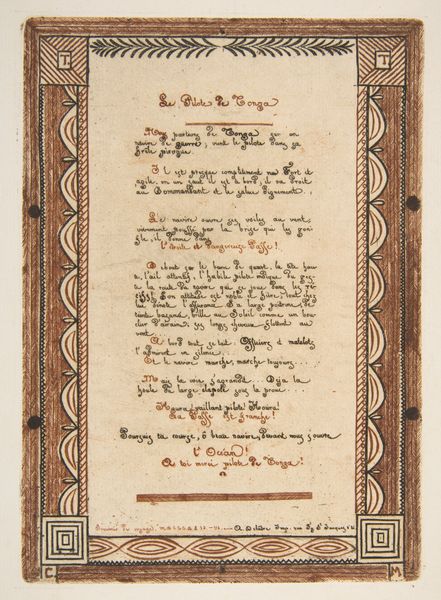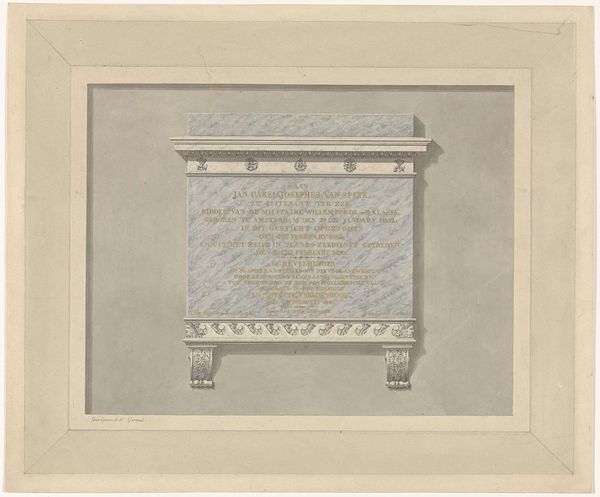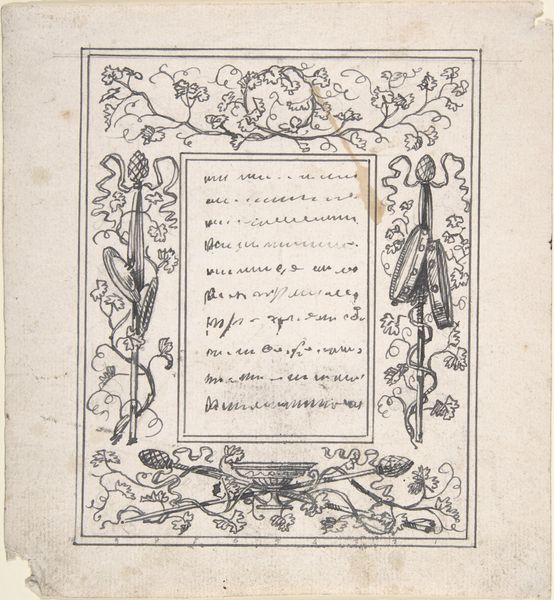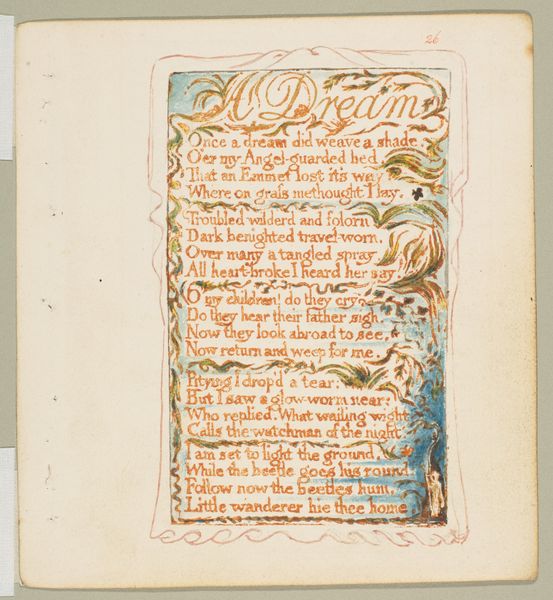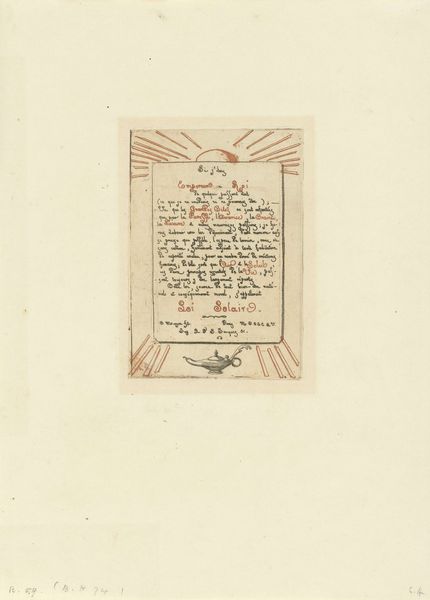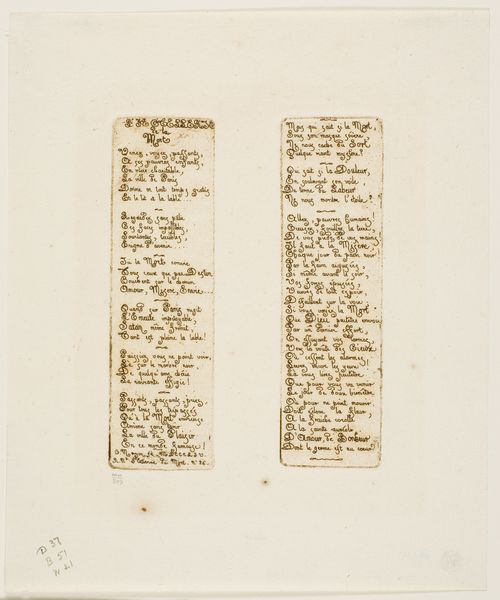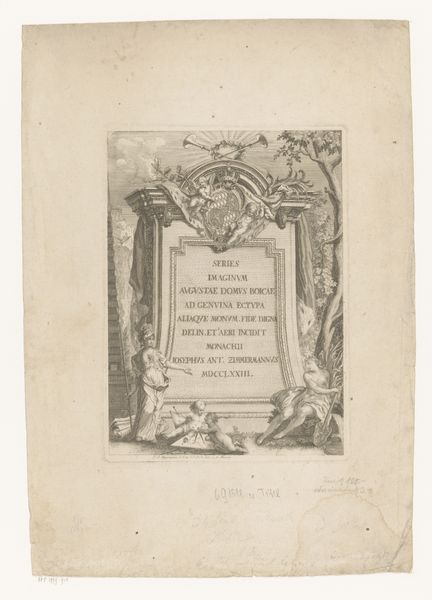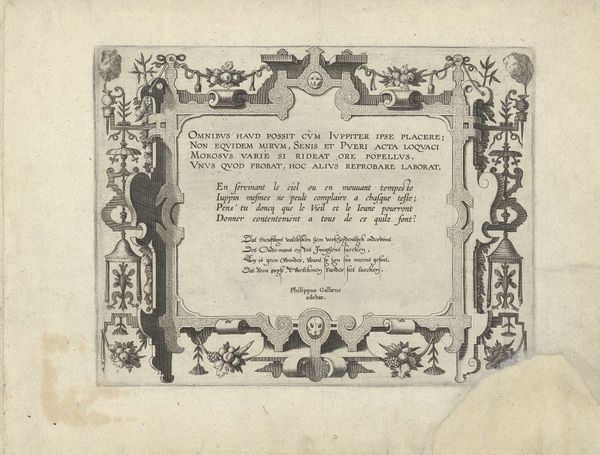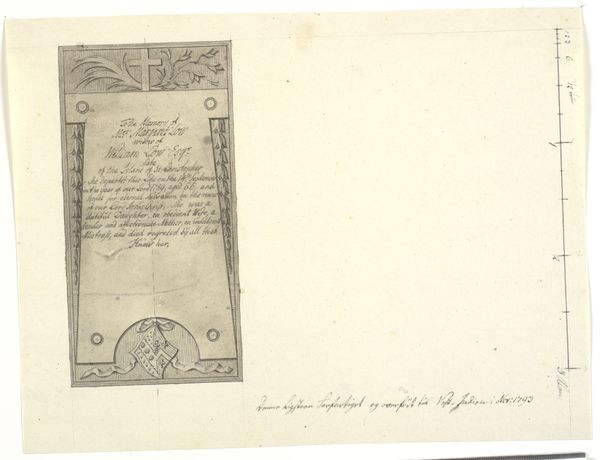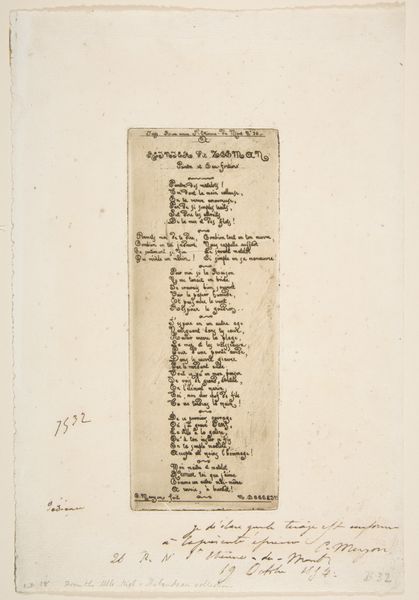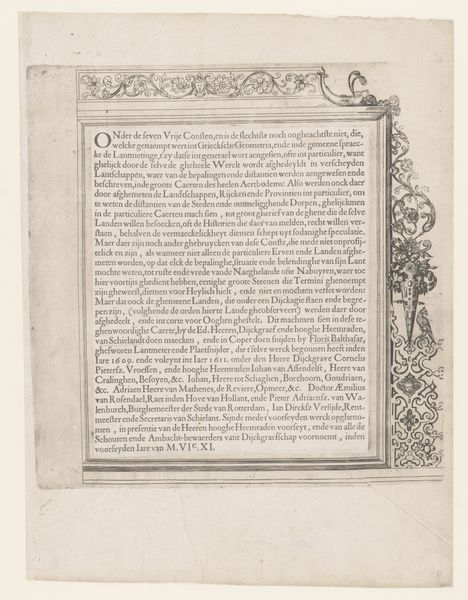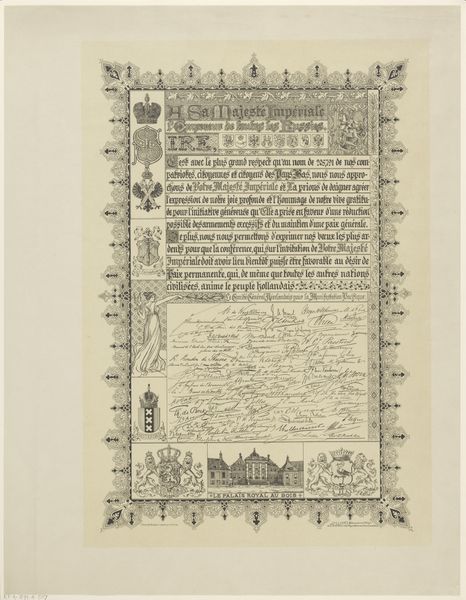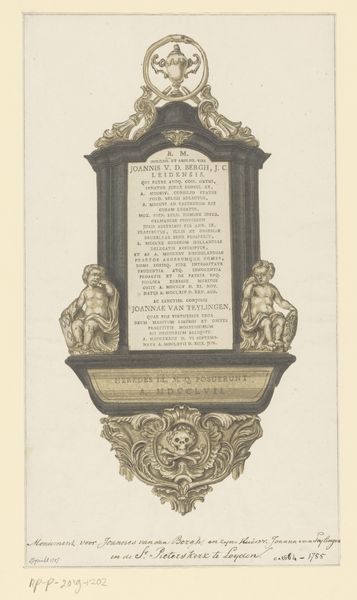
Dimensions: 202 × 144 mm (image); 202 × 144 mm (plate); 350 × 259 mm (sheet)
Copyright: Public Domain
Curator: I’m drawn in by the script. It feels so precise and controlled, almost…delicate? It’s encased in this patterned border, so it feels as if the writing is precious. Editor: Indeed. This is "The Pilot of Tonga," an 1856 etching by Charles Meryon, currently residing at the Art Institute of Chicago. What captivates me most is its intriguing fusion of text, printmaking, and graphic design. Meryon printed this intimate piece using etching, ink and textile on paper. Curator: It is striking. There’s almost a handmade feel to it, like illuminated calligraphy that's almost vibrating, full of barely restrained energy, right before its let loose and allowed to explode onto the paper.. It evokes an ancient map or an anthropologist’s detailed journal entry. Editor: The paper quality would suggest that Meryon valued not just the artistic merit, but also its economic worth and cultural portability through print, as the availability of etchings and engravings increased with industrial advancement in that era.. Do you consider that perhaps Meryon considered his audience when picking such specific materials? Curator: Maybe. What resonates most deeply is how the ornamental border transforms the writing into a carefully observed, presented… artifact. The border seems so primitive in comparison, like something a homesick traveler scratched into the wall of his rented room using materials acquired on site. It suggests memory, and an attachment to a person he most certainly misses. Editor: Interesting point! It is thought to be that this text may document specific oral tradition. In considering it is textile medium we could posit ideas of memory in connection with craft production. A sense of historical context can shift a purely aesthetic response, don't you agree? Curator: I do, absolutely. But ultimately, it is how these disparate elements, language and visual motifs collide that generates such unique impact, this particular aura. The text itself remains illegible to me. Perhaps it is for the best! Editor: Agreed! Considering the implications in regards to industrial practices around dissemination I would argue that the convergence of elements transcends any particular style. Curator: Yes, absolutely; regardless, “The Pilot of Tonga” beckons me back for another viewing to search for different ways I respond to art that resists easy interpretation.
Comments
No comments
Be the first to comment and join the conversation on the ultimate creative platform.
